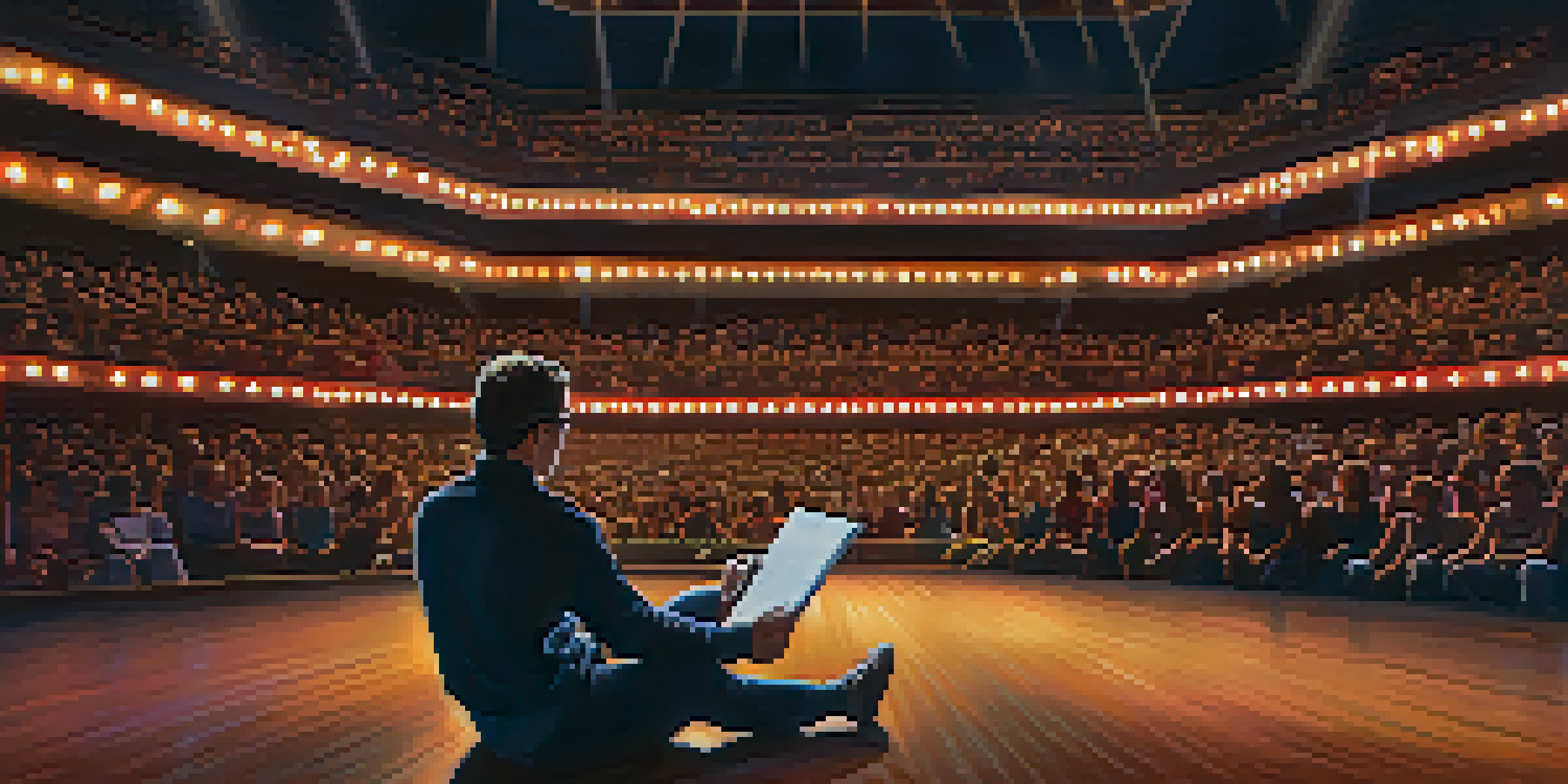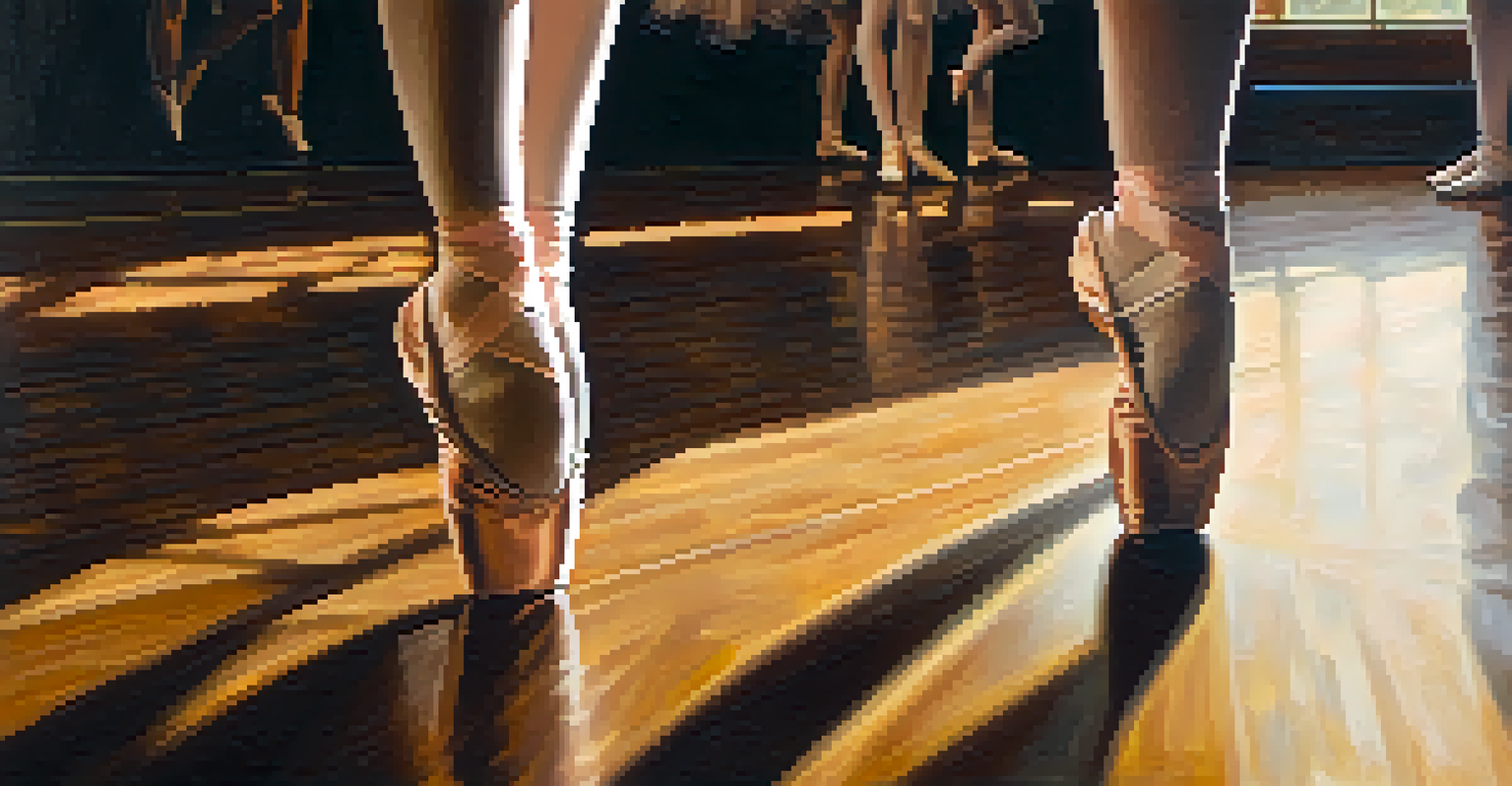Understanding the Audience: Critics’ Roles in Dance

The Importance of Dance Critics in the Industry
Dance critics play a vital role in the arts, acting as interpreters between the performers and the audience. They help to contextualize performances, offering insights that enhance the viewer's experience. Without critics, many audiences may struggle to grasp the nuances of a dance piece, leaving their appreciation incomplete.
Dance is the hidden language of the soul.
By providing thoughtful analysis, critics not only inform audiences but also help dancers and choreographers understand how their work is perceived. This feedback can be invaluable, guiding artists in their future creations and performances. Ultimately, critics serve as a bridge that connects the art form to the public.
Moreover, the visibility that critics bring can significantly impact a dance company's reputation and success. A well-written review can attract new audiences, encourage ticket sales, and elevate the profile of a production. In this way, critics are instrumental in shaping the landscape of dance.
How Critics Interpret Dance for the Audience
Critics often dissect performances to reveal deeper meanings, much like how a teacher might explain a complex math problem. Through their interpretations, they highlight themes, emotions, and even the technical aspects of choreography that may not be immediately obvious to the average viewer. This enhances the audience's understanding and appreciation of the dance art form.

For instance, a critic might draw parallels between a contemporary dance piece and historical events, enriching the audience’s experience by providing context. These interpretations can spark discussions, encouraging viewers to think critically about what they have seen. It transforms a passive viewing experience into an interactive one.
Critics Enhance Audience Experience
Dance critics contextualize performances, offering insights that deepen audience appreciation and understanding of the art form.
Critics also use their platforms to educate the audience about various dance styles and cultural backgrounds, making the art form more accessible. By demystifying dance, they invite a wider audience to engage with performances, fostering a more inclusive dance community.
The Relationship Between Critics and Dancers
The dynamic between critics and dancers is often complex, marked by both admiration and scrutiny. While dancers strive for perfection in their performances, critics hold them accountable, providing constructive feedback that can be hard to hear but is crucial for artistic growth. This relationship can be likened to a coach and athlete; both parties aim for excellence.
Art is not freedom from discipline, but disciplined freedom.
Critics often attend numerous performances, developing a keen eye for detail and trends within the dance community. This expertise allows them to offer valuable perspectives on a dancer's evolution over time. Conversely, dancers may find inspiration in critiques, using them as motivation to refine their skills and expand their repertoire.
However, this relationship isn't without its challenges. Some dancers may feel vulnerable when facing criticism, especially if it affects their self-esteem or career trajectory. It’s essential for both critics and performers to approach their interactions with respect and understanding, recognizing that they each play an integral role in the dance ecosystem.
The Influence of Audience Reception on Criticism
Audience reactions can greatly influence how critics perceive and evaluate a performance. A palpable energy in the theater can lead critics to interpret a piece more favorably, while a disengaged audience may prompt harsher critiques. This interplay highlights the importance of the audience's role, making them an essential component of the dance experience.
For example, if a performance elicits strong emotional responses from the audience, critics may focus on those elements in their reviews. They may highlight the connection between the dancers and the viewers, noting how that synergy enhances the overall impact of the piece. Thus, audience dynamics can shape the narrative that critics create around a performance.
Critics Guide Dancer Development
Constructive feedback from critics helps dancers refine their skills and evolve as artists, fostering growth within the dance community.
Furthermore, critics often consider the broader cultural context in which a performance occurs. They gauge how audience demographics and societal trends influence perceptions and reception, allowing for a more nuanced critique. This consideration reinforces the idea that dance is not just an isolated art form but a reflection of the community it serves.
Navigating the Fine Line of Constructive Criticism
Critics are tasked with the delicate job of offering constructive criticism that is both honest and respectful. Striking this balance is crucial; while a critic's job is to evaluate performance, their words can significantly impact artists' careers and confidence. An effective critique should illuminate areas for improvement while celebrating the strengths of a performance.
Using tactful language and framing critiques positively can help maintain a healthy relationship between critics and artists. For instance, instead of simply stating what went wrong, a critic might suggest alternative approaches or highlight moments that worked well, thereby fostering a spirit of collaboration rather than confrontation. This approach encourages growth and innovation within the dance community.
Moreover, critics should be aware of their own biases and strive to remain objective. Acknowledging personal preferences can help them assess performances more fairly. This self-awareness not only enhances the quality of their critiques but also builds trust with both the audience and the artists.
The Evolution of Dance Criticism in the Digital Age
In recent years, the rise of social media and digital platforms has transformed the landscape of dance criticism. With instant access to reviews and audience reactions online, critics must adapt to a faster-paced environment. This shift has led to a more democratized form of critique, where anyone can share their opinions, but it also raises questions about the credibility of those voices.
Critics now have the opportunity to engage with audiences in real-time, responding to feedback and fostering discussions around performances. This interaction can enrich the critique process, allowing for a more comprehensive understanding of audience perspectives. However, it also challenges critics to maintain their authority and expertise amidst a sea of opinions.
Digital Age Transforms Criticism
Social media and digital platforms have democratized dance criticism, allowing for real-time engagement and diverse perspectives on performances.
Moreover, digital platforms provide critics with new tools to express their analyses, such as video reviews or multimedia content. This innovation can make critiques more engaging and accessible, capturing the essence of a performance in ways that traditional written reviews may not. Embracing these changes can enhance how dance criticism is disseminated and consumed.
The Future of Dance Criticism: Challenges and Opportunities
Looking ahead, the future of dance criticism presents both challenges and opportunities. As the art form continues to evolve, so too must the ways in which critics approach their work. They will need to stay attuned to emerging trends and shifts in audience tastes while also addressing the diverse voices within the dance community.
One of the significant challenges is ensuring that criticism remains relevant in a rapidly changing cultural landscape. Critics must navigate issues such as inclusivity, representation, and the impact of technology on performances. By embracing these challenges, they can contribute to a more equitable and vibrant dance discourse.

At the same time, the opportunity exists for critics to become advocates for underrepresented artists and styles. By shining a light on diverse voices, critics can help broaden the audience's understanding of dance and foster a more inclusive environment. This evolution may ultimately enrich the dance community, leading to a more dynamic exchange between artists and audiences.